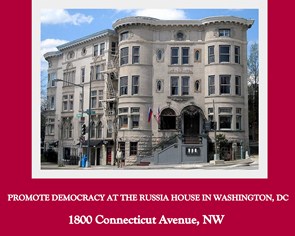
Nat Parry
Nat Parry is the co-author of Neck Deep: The Disastrous Presidency of George W. Bush. [This story originally appeared at Essential Opinion, https://essentialopinion.wordpress.com/2015/09/11/fleeing-the-u-s-freedom-agenda/]
Official Washington’s "regime change” strategy for governments that have somehow gotten on the "enemies list” is now threatening to destabilize not just the Mideast and Africa but Europe as well, yet there is little indication that these policies will change, as Nat Parry describes.
It has long been an article of faith that despite whatever slipups it might make along the way in pursuit of its foreign policy, the United States is always motivated by a sincerely held desire to promote democracy and human rights around the world, which, in turn, is seen as vital in ensuring global stability and prosperity.
The roots of this principle can be traced back to the days of "Manifest Destiny” – the prevalent mid-19th Century view that it was Anglo-Saxon Americans’ providential mission to expand their civilization westward across North America – and can be identified in the pronouncements of presidents including Woodrow Wilson and John F. Kennedy. But it was perhaps most eagerly embraced by George W. Bush, who claimed it as his divine mission to combat tyranny around the world. He called it "the Freedom Agenda.”
In the waning days of the Bush presidency, on Jan. 12, 2009, the White House even issued a "fact sheet” attempting to secure Bush’s legacy and defend his record in "spreading freedom,” which by then had already been largely discredited thanks to the disastrous U.S. invasion and occupation of Iraq.
"President Bush has kept his pledge to strengthen democracy and promote peace around the world,” the fact sheet read. "He has promoted the spread of freedom as the great alternative to the terrorists’ ideology of hatred, because expanding liberty and democracy will help defeat extremism and protect the American people.”
Although it was never fully articulated precisely how the use of U.S. military force would "promote the spread of freedom,” the so-called Freedom Agenda had broad appeal among American neoconservatives, arms manufacturers and others who had a vested interest in expanding U.S. power and deepening the nation’s involvement in geopolitical hotspots.
The narrative of "spreading freedom” also resonated with an American public long conditioned to believe that as the self-evident "good guys,” the U.S. could do no wrong – or, even if it did occasionally "make mistakes,” it was nevertheless guided by altruistic motives and therefore given a pass when "blunders” took place.
Much of the rest of the world also may have reluctantly accepted some American boorishness as the price to be paid for all the "good” that the U.S. did in promoting democracy and providing security.
But with the world now clearly in a state of rising instability and insecurity on multiple fronts – with refugee crises, violent extremism, economic volatility and climate chaos threatening to undermine the very foundations of civilization throughout Asia, Africa, Europe and North America – it has become increasingly obvious how misguided these policies have been.
Rather than establishing liberty and democracy as the irrefutable and irresistible alternatives to hatred and extremism, U.S. military involvement in the Middle East has played a key role in creating the conditions that have given rise to vicious groups like the Islamic State, or ISIS. The ongoing wars to "spread freedom” in the region have led to a humanitarian disaster and refugee crisis, the likes of which haven’t been seen in many decades.
Intelligence Assessment
Although the link between U.S.-led wars and the rise of extremism was once primarily made by left-wing dissidents and what conservatives dismissed as the "blame-America-first crowd,” the link became so obvious at some point during the Bush years that even so-called "serious” people in the intelligence community and foreign policy establishment began publicly stating this case.
Nearly a decade ago, a National Intelligence Estimate – representing the consensus view of the 16 spy services inside the U.S. government – starkly warned that a whole new generation of Islamic radicalism was being spawned by the U.S. occupation of Iraq. According to one American intelligence official, the consensus was that "the Iraq war has made the overall terrorism problem worse.”
The assessment noted that several underlying factors were "fueling the spread of the jihadist movement,” including "entrenched grievances, such as corruption, injustice, and fear of Western domination, leading to anger, humiliation, and a sense of powerlessness,” and "pervasive anti-U.S. sentiment among most Muslims – all of which jihadists exploit.”
But rather than leading to substantive changes or reversals in U.S. policies, the strategy agreed upon in Washington seemed to be to double down on the failed policies that had given rise to radical jihadist groups such as "Al Qaeda in Iraq,” which later vomited up its brutal offshoot ISIS. In fact, instead of withdrawing from Iraq, the U.S. decided to send a surge of 20,000 troops in 2007, and the combat mission dragged on well into President Barack Obama’s first term, despite his being elected on a wave of antiwar sentiment in 2008.
After its failure in Iraq, the U.S. turned its attention to Libya, overthrowing the government of Muammar Gaddafi in 2011 utilizing armed militias implicated in war crimes and backed with NATO air power. Following Gaddafi’s ouster, his caches of weapons ended up being shuttled to rebels in Syria, fueling the civil war there. The U.S. also took a keen interest in destabilizing the Syrian regime and to do so began providing arms that often fell into the hands of extremists.
The CIA trained and armed so-called "moderate” rebel units in Syria, only to watch these groups switch sides by joining forces with Islamist brigades such as ISIS and Al Qaeda’s affiliate the Nusra Front. Others surrendered to Sunni extremist groups – with the U.S.-provided weapons presumably ending up in the arsenals of jihadists – or sometimes just quit or went missing altogether.
As the Wall Street Journal rather dryly reported last January, "All sides now agree that the U.S.’s effort to aid moderate fighters battling the Assad regime has gone badly.”
The "moderates” only managed to hold control over small pockets of northern Syria, while radical jihadists gained ground culminating earlier this month in the seizure of the last major oilfield under Syrian government control by ISIS.
As the Sunni extremist groups have consolidated control, the ranks of refugees have swelled, overwhelming authorities in European countries who lack any sort of cohesive policy to deal with the crisis. The numbers of refugees are growing as attacks by rebels have increased in recent months, with the United Nations now projecting that at least 850,000 people will cross the Mediterranean seeking refuge in Europe this year and next.
Although Assad continues to be blamed for the vast majority of civilian deaths in the civil war, rebel mortar attacks on Damascus and a wave of car bombings in major cities like Lattakia, Aleppo, Homs, Hassakeh and Qamishli have driven thousands from their homes, according to the UN High Commissioner on Refugees.
"Inside Syria, the last few months have been brutal,” UNHCR spokesperson Melissa Flemingtold a press briefing in Geneva on Sept. 8. "Fighting has intensified in almost all governorates.”
As bad as it currently is, the situation will likely dramatically worsen if the Assad regime collapses. Already, some are predicting a dramatic upsurge in refugees fleeing the country if the Islamist groups continue their advance on Damascus.
Writing in the British Independent on Sept. 6, Patrick Cockburn noted that ISIS is currently threatening to capture a crucial road, the M5 highway, which is the last major route connecting government-held territory in Damascus to the north and west of the country. The loss of this highway "could touch off a panic and the exodus of several million refugees from government areas, in addition to the four million who have already fled,” Cockburn warns.
Stressing that the Assad government at the moment is relatively secure, Cockburn predicts that "any sign that it is weakening will convince millions of Syrians that it is time to leave the country” in a last-ditch attempt to flee the brutality of ISIS.
‘Bad, Bad Sick Joke’
Reelected by large margins last year in a partial presidential election (excluding areas of Syria not under government control), Assad is widely viewed as the protector of Syria’s Christian, Shiite and Alawite minorities, groups that will likely be among the first victims of ISIS’s mass executions should these extremists seize control of Damascus.
But despite this reality and the already dire situation of refugees fleeing to Europe and elsewhere, Western governments are doing little to help end the Syrian civil war. In fact, true to form, while the U.S. attempts to block Russia from providing any sort of support to the Assad government, the Obama administration continues to fuel the war by supporting rebel groups with training, weapons, and air support.
A $500 million Pentagon program meant to replace or supplement the CIA’s earlier training program with a view towards more comprehensively supporting "moderate” Syrian rebels is reportedly being re-examined in light of criticism that the first group of U.S.-trained Syrian fighters was handily defeated by Al Qaeda’s Syrian affiliate in late July. The Islamists apparently attacked the group and took an unspecified number hostage, with the remaining fighters fleeing and still unaccounted for.
As the Associated Press reported on Wednesday, "Pentagon press secretary Peter Cook offered no details on how the program could be revamped, but told reporters that Defense Secretary Ash Carter still believes training and equipping moderate Syrian rebels and sending them into battle against the Islamic State is the right strategy.”
Despite these reassurances, congressional hawks like Sen. John McCain, R-Arizona, arewithdrawing their support for the program just a year after Congress authorized it. "It’s a bad, bad sick joke,” said McCain of the program, while Sen. Chris Murphy, D-Connecticut, called it "a bigger disaster than I could have ever imagined.”
But perhaps this just goes to show how limited U.S. policymakers’ imaginations are and how tone-deaf they remain to criticisms and words of caution. Russia, for one, has long been raising concerns over Washington’s support for the Syrian rebels, a policy which is blamed not only for the refugee crisis destabilizing Europe but also the failure to defeat the Islamic extremists in Syria.
Russian criticisms reached a new height last month when it was announced that the U.S. would be providing air support to the rebels fighting both Assad and ISIS. Officials in Moscow warned on Aug. 3 that Obama’s decision to back allied Syrian rebels with airstrikes would unleash wider chaos and instability in Syria.
Kremlin spokesman Dmitry Peskov told reporters that Russia has "repeatedly underlined that help to the Syrian opposition, moreover financial and technical assistance, leads to further destabilization of the situation in the country.”
But now it is Washington that has gone on the offensive in the war of words between the U.S. and Russia. Following reports that Russia sent a military advance team to Syria, State Department officials objected to what they call Russia’s military "buildup” in Syria.
In a call to Russian Foreign Minister Sergei Lavrov on Wednesday, U.S. Secretary of State John Kerry "reiterated our concern about these reports of Russian military activities, or buildup if you will, in Syria and made very clear our view that, if true and borne out, could lead to greater violence and even more instability in Syria,” according to State Department spokesman John Kirby.
Who’s Destabilizing Whom?
It’s a classic tactic of Washington – when it is guilty of destabilizing a country, it points the finger at another culprit to deflect attention from the mess that it has made. Yet, far from being the result of Russian meddling, the destabilization of Syria starting in 2011 can actually be traced back to 2001, when plans were hatched in the Pentagon for taking out governments in seven Middle Eastern countries.
According to former NATO Commander General Wesley Clark, shortly after 9/11 he was shown a confidential memo by a general at the Pentagon detailing plans to overthrow governments in Iraq, Syria, Lebanon, Libya, Somalia, Sudan and Iran.
Of those seven, two governments (Iraq and Libya) were subsequently overthrown, one country (Sudan) was cut in half, one (Somalia) became "the most failed state on earth” and two (Syria and Lebanon) have been destabilized. War with Iran was only narrowly averted thanks to multilateral diplomacy and perhaps a little luck.
The reality is that the four-year old civil war in Syria, fueled in large part by Washington’s training and arming of the rebels, appears to have the goal of implementing "regime change” through an armed insurgency, much in the same way as it has been done in other countries, including most recently Libya.
This is Bush’s "Freedom Agenda” in action, and the four million Syrians who have already fled their homelands could rightly be considered "Freedom Agenda refugees.”
The dangers of pursuing these policies are palpable, as we see the worst refugee crisis since World War II playing out across Europe, but the worst of the ramifications may be yet to come.
Destabilizing the World
When it comes to Syria, the refugees who have already fled mostly came from opposition or contested areas that have been devastated by fighting. But most of the 17 million Syrians still in the country live in government-controlled areas, which are now increasingly threatened by ISIS. If these people find themselves more exposed to ISIS’s notorious brutality, they will likely swell the ranks of refugees beyond anything we have seen to date.
And this is only Syria. It should be kept in mind that another U.S.-fueled war in nearby Yemen – the poorest country in the Middle East – could contribute to yet another wave of refugees attempting the dangerous journey across the Mediterranean into Europe.
In a recent report, Amnesty International described the situation in Yemen as dire. "Prior to the conflict, more than half of Yemen’s population was in need of some humanitarian assistance,”according to Amnesty. "That number has now increased to more than 80 percent, while a coalition-imposed blockade on commercial imports remains in place in much of the country and the ability of international aid agencies to deliver desperately needed supplies continues to be hindered by the conflict.”
The human rights group points out that although the United States is not formally part of the Saudi-led coalition, "it is assisting the coalition air campaign by providing intelligence and aerial refueling facilities to coalition bomber jets,” as well as weapons including banned cluster munitions being used against Yemeni civilians.
Its assistance "makes the United States partly responsible for civilian casualties resulting from unlawful attacks,” says Amnesty, noting that "the countries that supplied the weapons have a responsibility to ensure that they are not used to commit violations of international law.”
In another recent report, the Stockholm International Peace Research Institute documented that the U.S. has become further entrenched as the world’s top exporter of weapons, now accounting for 31 percent of all arms sales around the world. SIPRI noted that the volume of U.S. arms exports rose by 23 percent since 2005, with the biggest increase in transfers going to the Middle East.
Besides flooding the planet with small arms and light weapons, heavy artillery, armored vehicles, and warships, the U.S. has also increased its military assistance to various countries through joint exercises and training missions.
Nick Turse reported at the Intercept on Wednesday that "from 2012 to 2014 some of America’s most elite troops — including Navy SEALs and Army Green Berets — carried out 500 Joint Combined Exchange Training missions around the world.”
Many of these missions are contributing to rising tensions everywhere from Eastern Europe to the Korean Peninsula. Taken together, they are certainly cause for concern for anyone hoping to live in a world at peace and security. Indeed, the fallout from the Freedom Agenda playing out now in Syria could be just the beginning unless U.S. policymakers take a step back and reassess their actions across the globe.




_jpg/250px-ElbeDay1945_(NARA_ww2-121).jpg)





